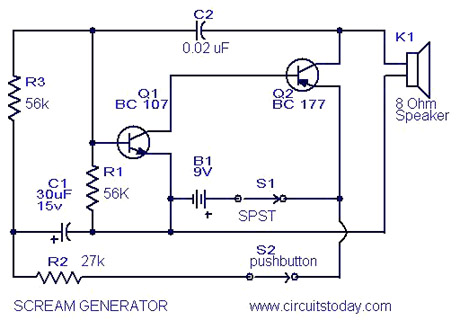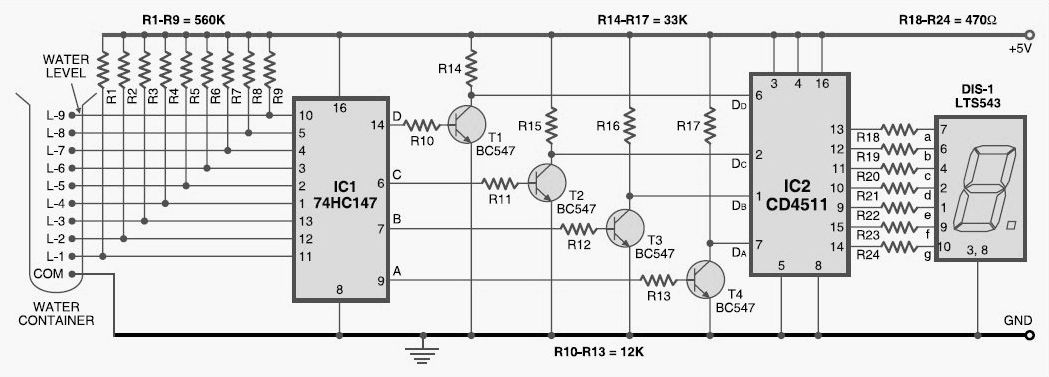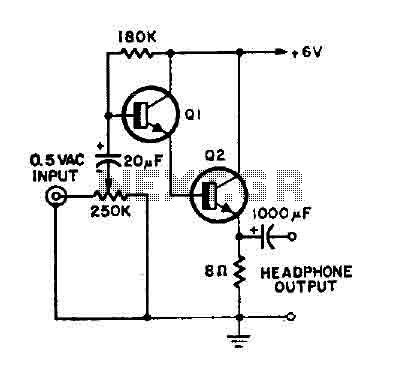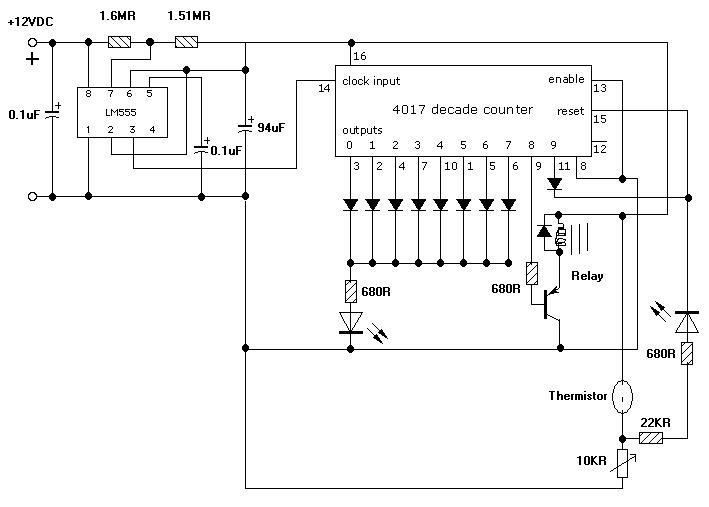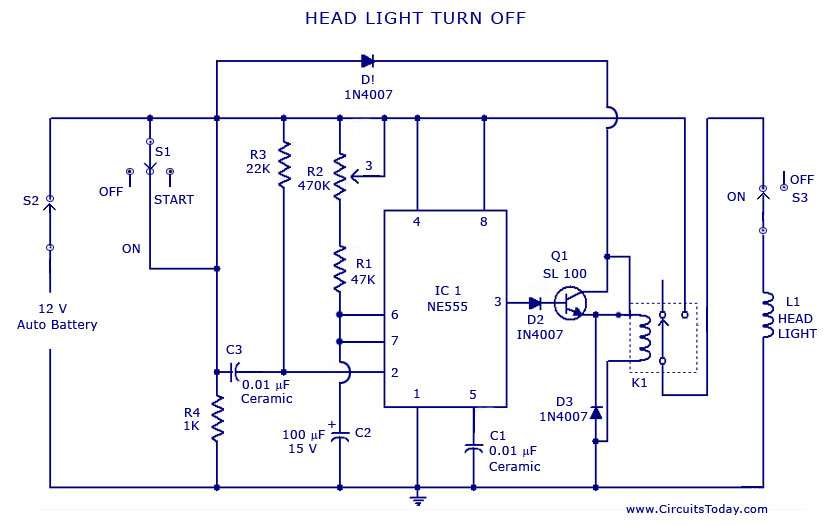
Magnetic Field Meter Magnetometer Circuit
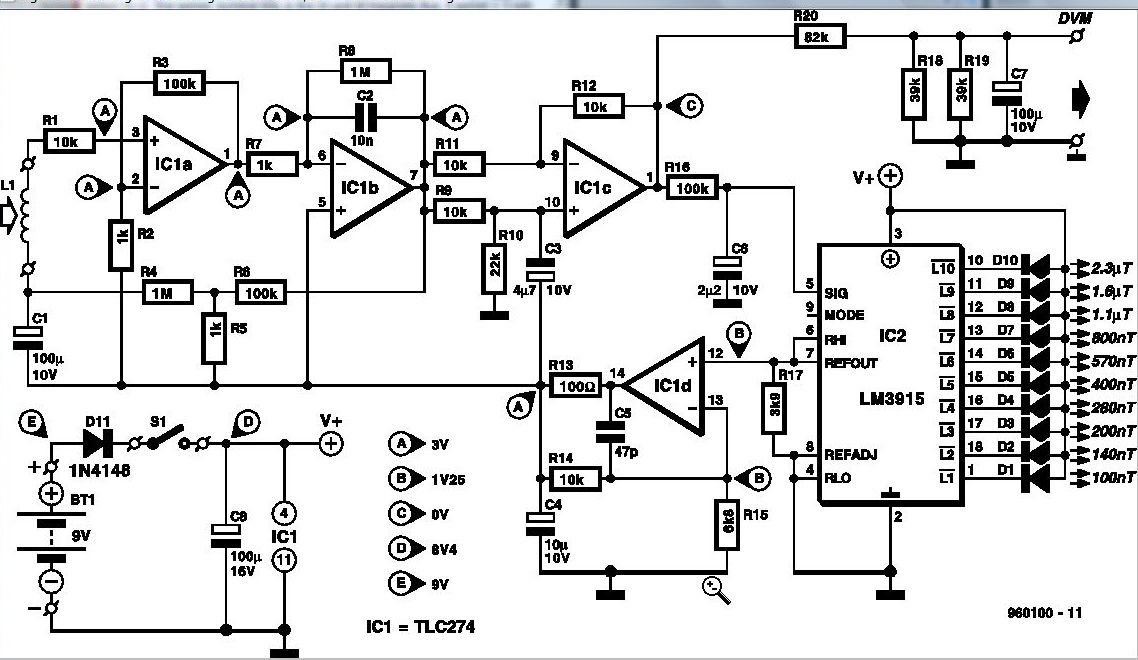
Some experts believe that static magnetic fields (SMFs) may affect the physical well-being of individuals. If one subscribes to this viewpoint, the magnetic-field meter described here will aid in locating sources of SMFs and assessing their strength. These results may assist in reducing field strength. The input amplifier, based on IC1a, amplifies the signal from the induction coil, L1, by a factor of 101. The coil is terminated into a high impedance, allowing its output to be buffered by the operational amplifier. The integrator, composed of IC1B, is another one of the four operational amplifiers within IC1. The active rectifier, based on IC1C, functions as a differential amplifier that reduces the average voltage by the output potential of the integrator. Given that the operational amplifier is powered asymmetrically, the output manifests as a half-wave rectified alternating voltage. This voltage is averaged by R16-C6 or, if a digital voltmeter (DVM) is utilized as the meter, by R18-R20-C7. The form factor (2.22) is corrected by the rectifier. Level matching is intentionally executed by the rectifier since this operational amplifier can swing significantly more than IC1a or IC1b. The principle of the meter is illustrated in the block diagram. The induction coil, which detects the magnetic field, is represented as an alternating voltage source, V1, with an average output of 1 µV. The output from this source is amplified by a factor of 101 by operational amplifier X1. This amplifier connects to integrator X2, which offers frequency-dependent amplification. For direct voltage signals, this amplification is 1000, while for high-frequency signals, it is 0. The crossover frequency is selected to ensure uniform amplification across the magnetic induction measurement range (40 Hz to 10 kHz). The feedback network (R4-R6) guarantees a stable DC operating point at all times, enabling the use of relatively inexpensive operational amplifiers. The internal attenuator ensures that the maximum DC amplification is 101 (1 + R6/R5), with the ratio of R6/R5 also determining the lower limit of the frequency range. The circuit diagram of the meter includes an input amplifier, integrator, automatic offset correction network, rectifier with DC suppression, display and associated driver, power supply, and a socket for connection to a digital voltmeter (DVM). Operational amplifiers IC1a and IC1b carry a pure sinusoidal signal that alternates symmetrically around a direct voltage of 3 V, while IC1c alternates around 0 V. This configuration allows IC1c to handle an amplification of 2.2 more effectively than the previous two. The voltage drop across C6 is utilized by the display driver, IC2, to indicate the strength of the magnetic field. The driver has its own reference voltage source of 1.25 V, which is also used to derive an auxiliary voltage for operational amplifiers IC1a and IC1b. The potential at node A is calculated as [(R14 + R15) / R15] x 1.25 = 3 V. The minimum voltage required for IC2 to provide full drive is 1.2 V. Since IC2 is driven by an averaged potential, the signal level necessary for full drive is 1.2 x π = 3.77 Vpp. Because signal amplification occurs within the rectifier (the op-amp with the largest drive range), a drop in battery voltage does not immediately compromise the meter's accuracy. The display driver operates ten LEDs, clearly indicating which LED illuminates at a given field strength. When D10 lights up, the measured field strength is greater than or equal to 2.3 µV, exceeding the upper limit specified in MPRII (250 nT). If the meter is connected to a DVM, it should be set to the 200 mV direct voltage range, allowing for a measurement range of 50 nT to 2 µT. Measurements below 50 nT are not feasible.
The magnetic-field meter is designed to provide a reliable means of detecting and measuring static magnetic fields, which are of increasing concern in various health discussions. The operational amplifiers play a critical role in ensuring that the weak signals from the induction coil are amplified sufficiently for accurate measurement. The choice of components, such as the feedback network and the rectifier configuration, contributes to the circuit's stability and accuracy, allowing it to function effectively within the specified frequency range. Additionally, the integration of a display driver with LED indicators enhances user interaction by providing immediate visual feedback on the field strength detected. This meter can be particularly useful in environments where exposure to SMFs is a concern, enabling users to make informed decisions regarding their exposure levels. The inclusion of a DVM connection further extends the functionality of the device, allowing for precise digital readings of the magnetic field strength. Overall, this circuit represents a sophisticated approach to monitoring static magnetic fields, combining ease of use with technical efficiency.Some experts` think that SMFs may affect the physical well-being of people. If you believe that these experts are right, the magnetic-field meter described will help you find sources of SMFs and determine their strength. These findings may help you reduce the field strength. The input amplifier, based on IC1a, ensures that the signal from the induction coil, L1, is amplified x 101.
The coil is terminated into a high impedance, so that its output is buffered by the op amp. The integrator consists of IC1B, another of the four op amps contained in IC1. The (active) rectifier, based on IC1c, is, in fact, a differential amplifier that lessens the average voltage by the output potential of the integrator. Since the op amp is powered asymmetrically, the output is a half-wave rectified alternating voltage. This voltage is averaged by R16-C6 or, in case a DVM is used as the meter, by R18-R20- C7. The form factor (2. 22) is corrected by the rectifier. The level matching is purposely carried out by the rectifier since this op amp has a much larger swing than IC1a or IC1b.
The principle of the present meter is shown in the block diagram in Figure 1. The induction coil used to detect the magnetic field is represented by an alternating- voltage source, V1, whose average output is 1 µV. The output of the source is amplified x 101 by op amp X1. The op amp is linked to integrator X2 which provides frequency-dependent amplification. For direct-voltage signals this is 1000, for high-frequency signals it is 0. The cross-over frequency is chosen so that the amplification is uniform over the range in which magnetic induction is to be measured (40 Hz 10 kHz).
Feedback network R4-R6 automatically ensures that the circuit has a stable d. c. operating point at all times. This makes it possible for relatively inexpensive op amps to be used. Also, the internal attenuator ensures that the maximum d. c. amplification is x 101 (1+R6/R5). The value of R6/R5 also determines the lower limit of the frequency range. The circuit diagram of the meter is shown in Figure 2. It consists of an input amplifier, integrator, automatic offset correction network, rectifier with d. c. suppression, display and associated drive, power supply, and a socket for connection to a digital voltmeter (DVM).
Op amps IC1a and IC1b carry a pure sinusoidal signal that alternates symmetrically around a direct voltage of 3 V, whereas that of IC1c alternates around 0 V. This means that this op amp can handle an amplification of x 2. 2 much better than the earlier two. The drop across C6 is used by the display driver, IC2, to represent the strength of the magnetic field.
The driver has its own reference-voltage source. This 1. 25 V source is also used to derive an auxiliary voltage for op amps IC1a and IC1b. The potential at node A is [ ( R14 + R15 ) / R15 ] x 1. 25 = 3 V. The minimum voltage at which IC2 provide full drive is 1. 2 V. Since the IC is driven by an averaged potential, the signal level required for full drive is 1. 2 x Pi = 3. 77 Vpp. Because the signal amplification takes place in the rectifier, that is, the op amp with the largest drive range, a drop in battery voltage does not immediately affect the accuracy of the meter. The display driver controls ten LEDs. The diagram clearly shows which LED lights at a given fieldstrength. When D10 lights, the measured fieldstrength >=2. 3 µV, rather greater than the upper limit specified in MPRII (250 nT). If the meter is linked to a DVM, this must be set to its 200 mV direct- voltage range. The measurement range is then 50 nT 2 µT. Measuring levels below 50 nT is not possible o 🔗 External reference
The magnetic-field meter is designed to provide a reliable means of detecting and measuring static magnetic fields, which are of increasing concern in various health discussions. The operational amplifiers play a critical role in ensuring that the weak signals from the induction coil are amplified sufficiently for accurate measurement. The choice of components, such as the feedback network and the rectifier configuration, contributes to the circuit's stability and accuracy, allowing it to function effectively within the specified frequency range. Additionally, the integration of a display driver with LED indicators enhances user interaction by providing immediate visual feedback on the field strength detected. This meter can be particularly useful in environments where exposure to SMFs is a concern, enabling users to make informed decisions regarding their exposure levels. The inclusion of a DVM connection further extends the functionality of the device, allowing for precise digital readings of the magnetic field strength. Overall, this circuit represents a sophisticated approach to monitoring static magnetic fields, combining ease of use with technical efficiency.Some experts` think that SMFs may affect the physical well-being of people. If you believe that these experts are right, the magnetic-field meter described will help you find sources of SMFs and determine their strength. These findings may help you reduce the field strength. The input amplifier, based on IC1a, ensures that the signal from the induction coil, L1, is amplified x 101.
The coil is terminated into a high impedance, so that its output is buffered by the op amp. The integrator consists of IC1B, another of the four op amps contained in IC1. The (active) rectifier, based on IC1c, is, in fact, a differential amplifier that lessens the average voltage by the output potential of the integrator. Since the op amp is powered asymmetrically, the output is a half-wave rectified alternating voltage. This voltage is averaged by R16-C6 or, in case a DVM is used as the meter, by R18-R20- C7. The form factor (2. 22) is corrected by the rectifier. The level matching is purposely carried out by the rectifier since this op amp has a much larger swing than IC1a or IC1b.
The principle of the present meter is shown in the block diagram in Figure 1. The induction coil used to detect the magnetic field is represented by an alternating- voltage source, V1, whose average output is 1 µV. The output of the source is amplified x 101 by op amp X1. The op amp is linked to integrator X2 which provides frequency-dependent amplification. For direct-voltage signals this is 1000, for high-frequency signals it is 0. The cross-over frequency is chosen so that the amplification is uniform over the range in which magnetic induction is to be measured (40 Hz 10 kHz).
Feedback network R4-R6 automatically ensures that the circuit has a stable d. c. operating point at all times. This makes it possible for relatively inexpensive op amps to be used. Also, the internal attenuator ensures that the maximum d. c. amplification is x 101 (1+R6/R5). The value of R6/R5 also determines the lower limit of the frequency range. The circuit diagram of the meter is shown in Figure 2. It consists of an input amplifier, integrator, automatic offset correction network, rectifier with d. c. suppression, display and associated drive, power supply, and a socket for connection to a digital voltmeter (DVM).
Op amps IC1a and IC1b carry a pure sinusoidal signal that alternates symmetrically around a direct voltage of 3 V, whereas that of IC1c alternates around 0 V. This means that this op amp can handle an amplification of x 2. 2 much better than the earlier two. The drop across C6 is used by the display driver, IC2, to represent the strength of the magnetic field.
The driver has its own reference-voltage source. This 1. 25 V source is also used to derive an auxiliary voltage for op amps IC1a and IC1b. The potential at node A is [ ( R14 + R15 ) / R15 ] x 1. 25 = 3 V. The minimum voltage at which IC2 provide full drive is 1. 2 V. Since the IC is driven by an averaged potential, the signal level required for full drive is 1. 2 x Pi = 3. 77 Vpp. Because the signal amplification takes place in the rectifier, that is, the op amp with the largest drive range, a drop in battery voltage does not immediately affect the accuracy of the meter. The display driver controls ten LEDs. The diagram clearly shows which LED lights at a given fieldstrength. When D10 lights, the measured fieldstrength >=2. 3 µV, rather greater than the upper limit specified in MPRII (250 nT). If the meter is linked to a DVM, this must be set to its 200 mV direct- voltage range. The measurement range is then 50 nT 2 µT. Measuring levels below 50 nT is not possible o 🔗 External reference
Warning: include(partials/cookie-banner.php): Failed to open stream: Permission denied in /var/www/html/nextgr/view-circuit.php on line 713
Warning: include(): Failed opening 'partials/cookie-banner.php' for inclusion (include_path='.:/usr/share/php') in /var/www/html/nextgr/view-circuit.php on line 713
